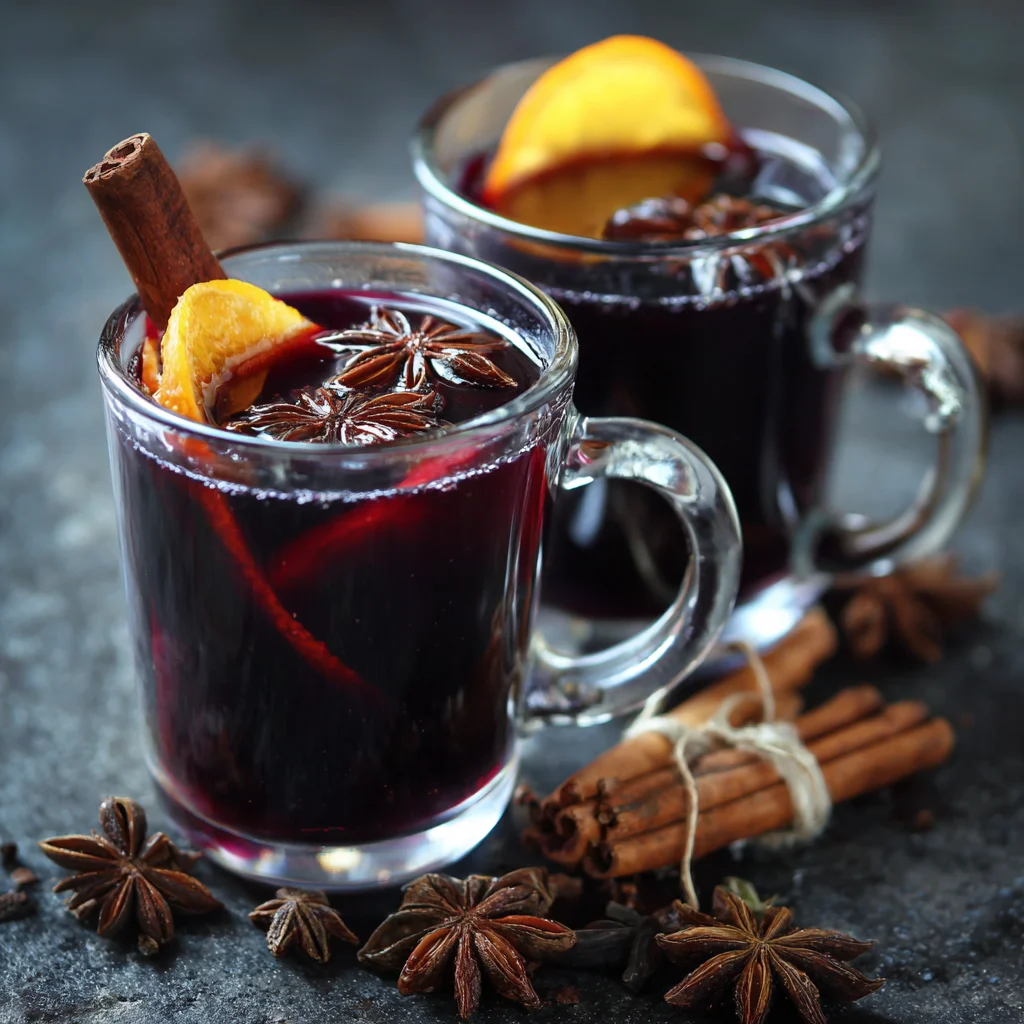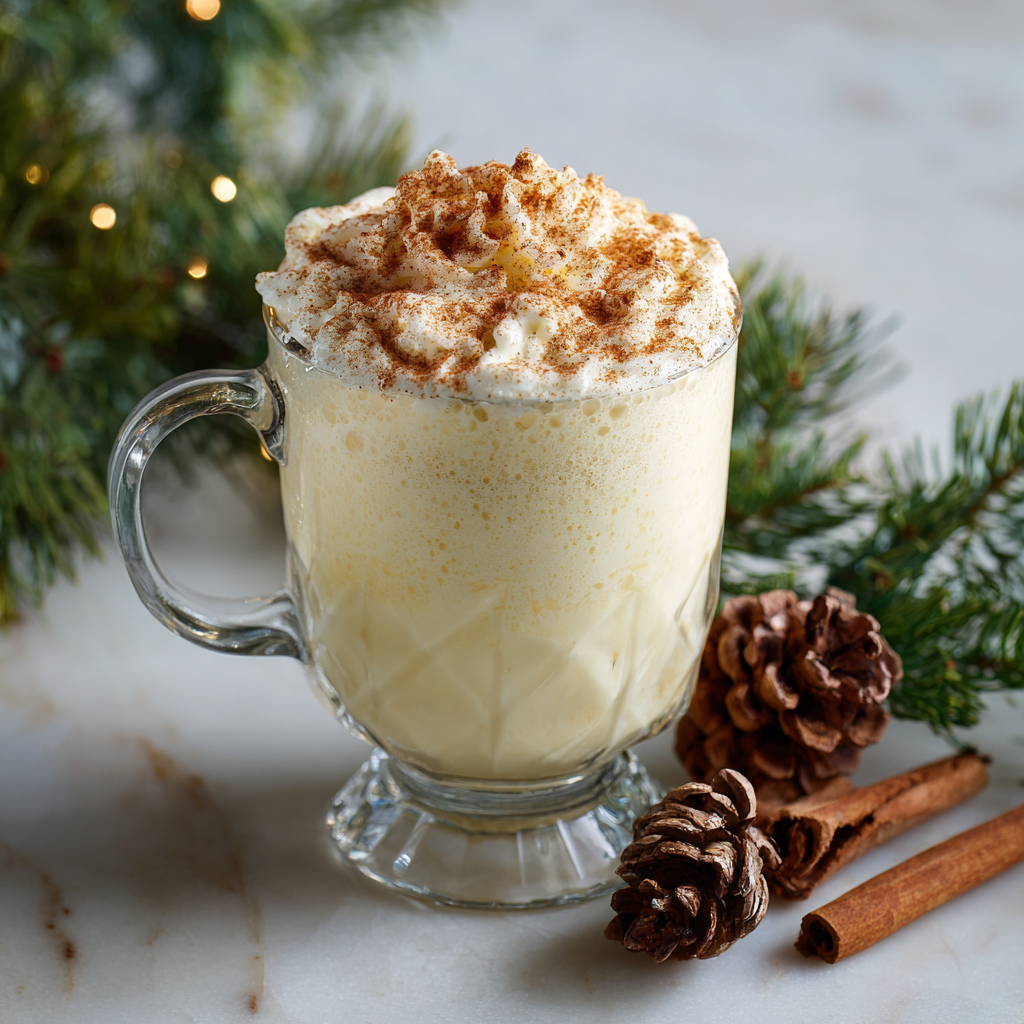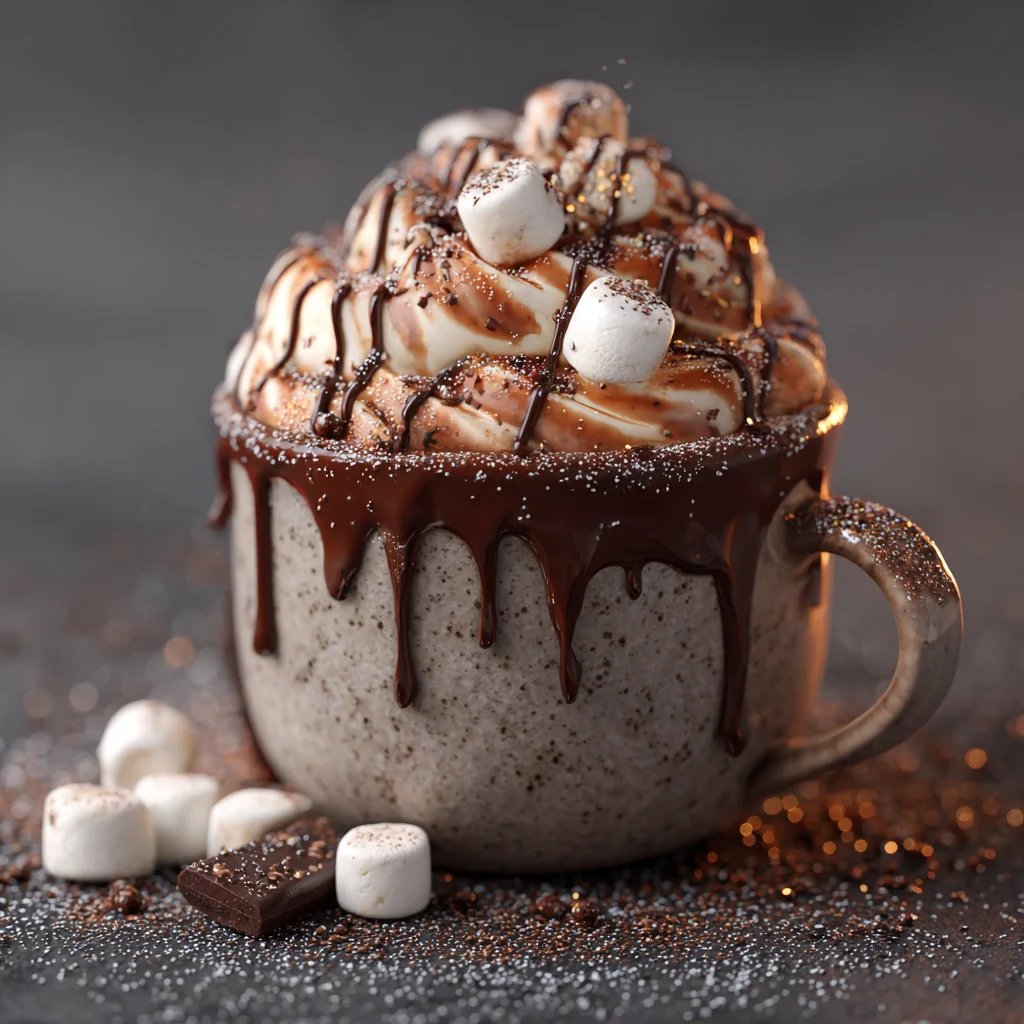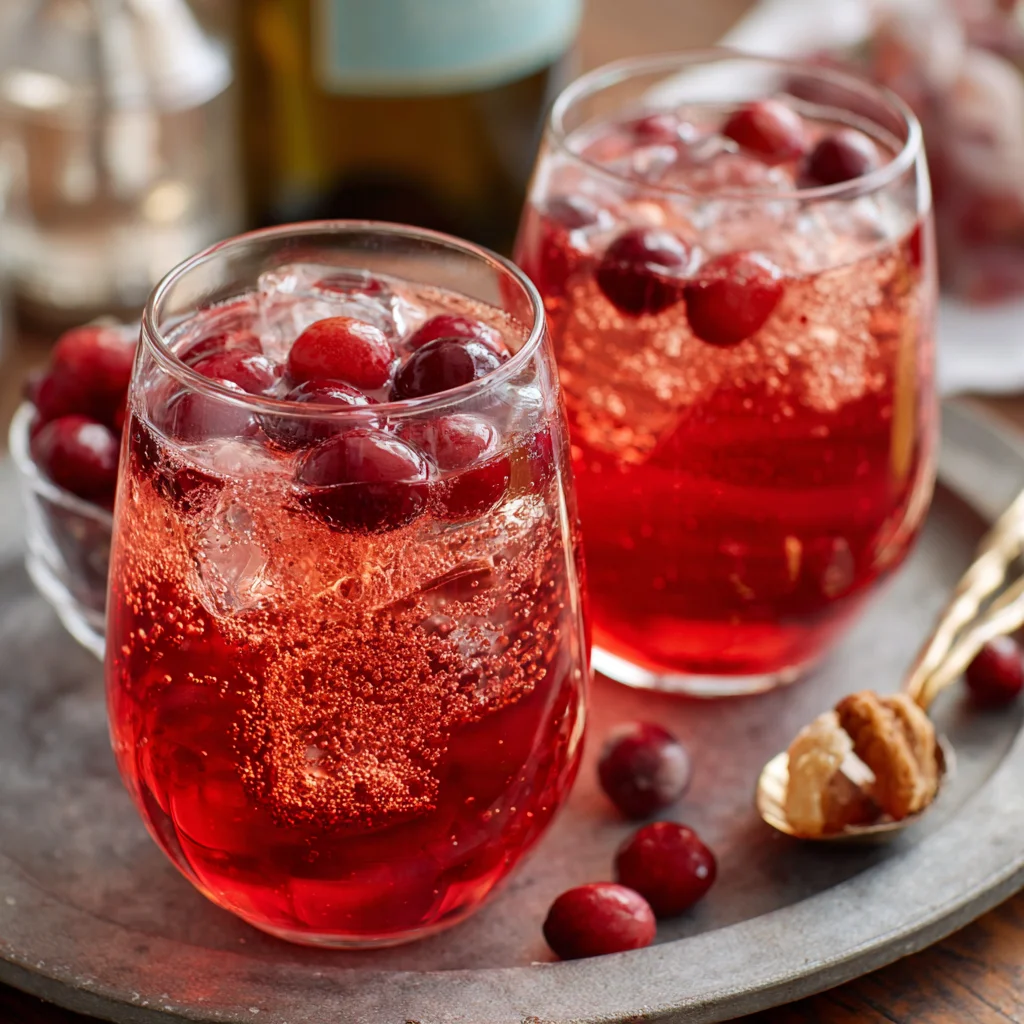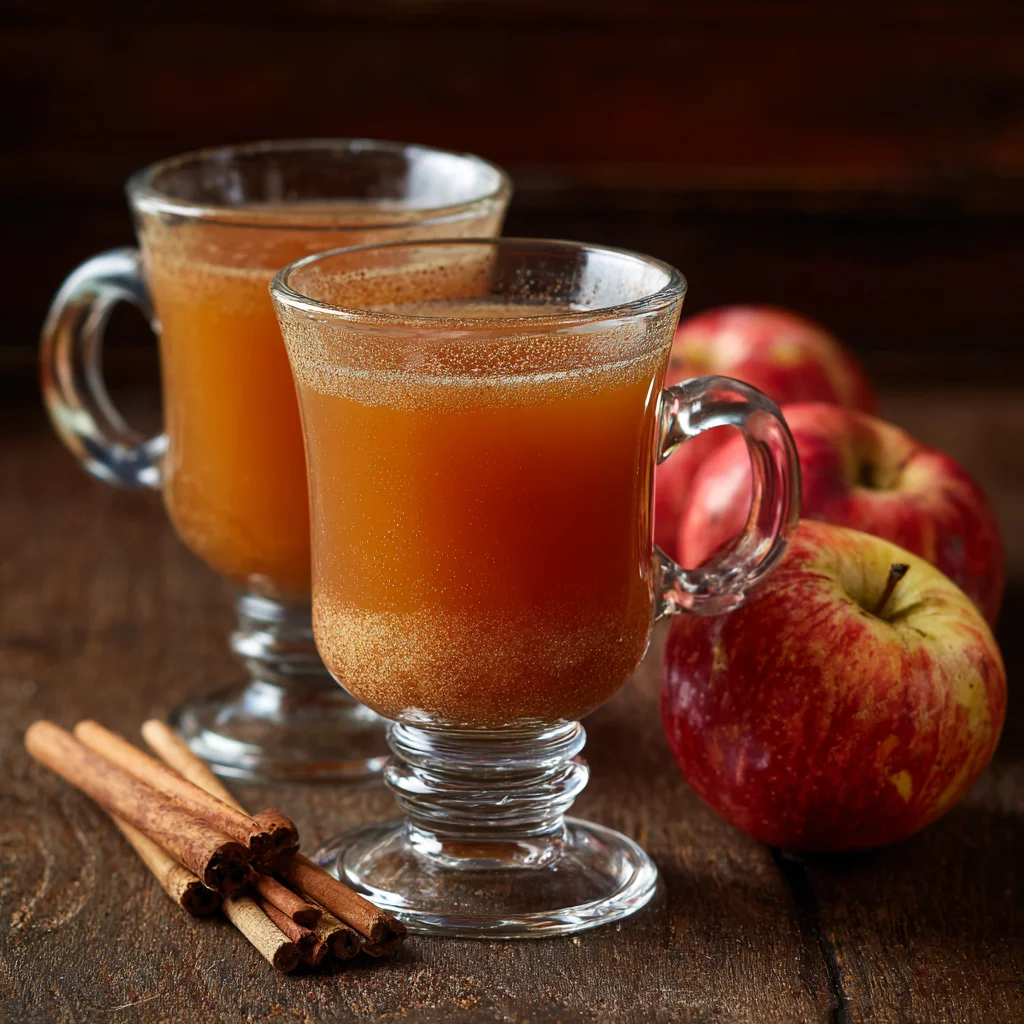When the temperatures drop and winter festivities take over, nothing compares to the comforting aroma of Mulled Wine (Vin chaud) simmering gently on the stove. This warm, spiced wine drink has been cherished for centuries in Europe, especially around Christmas markets in France and Germany, and it continues to hold its place as one of the most iconic holiday beverages worldwide. Whether you’re preparing it for a festive gathering, a cozy night in, or a holiday feast, this recipe for mulled wine is guaranteed to warm your soul and delight your guests.
In this article, we’ll walk you through everything you need to know to make the perfect Mulled Wine (Vin chaud) at home: ingredients, equipment, step-by-step instructions, useful tips, nutritional information, and even pairing suggestions. By the end, you’ll have mastered not only the classic version but also variations you can experiment with to make it your own.
What is Mulled Wine (Vin chaud)?
Before diving into the recipe, let’s explore the essence of Mulled Wine (Vin chaud). This traditional European beverage is made by gently heating red wine with spices, citrus, and sweeteners to create a warm, aromatic drink. The French call it “Vin chaud,” literally meaning “hot wine,” while the English-speaking world refers to it as mulled wine. It’s a beloved drink during Christmas markets, après-ski gatherings, and festive celebrations.
Its roots date back to the Roman Empire, where spiced and heated wines were consumed both for flavor and medicinal purposes. Over the centuries, it evolved across Europe, with each country adding its own twist. Today, mulled wine remains a timeless holiday staple, often associated with cozy evenings, family celebrations, and the magic of winter.
Ingredients for Mulled Wine (Vin chaud)
The beauty of Mulled Wine (Vin chaud) lies in its simplicity. Most ingredients are pantry staples, and you can easily adjust them to your preferences. Below is a traditional recipe for 6–8 servings.
Core Ingredients:
-
1 bottle (750 ml) of dry red wine – Merlot, Cabernet Sauvignon, or Syrah work wonderfully. Avoid overly expensive wines; mid-range quality is best.
-
1 orange – sliced into rounds (preferably organic, since you’ll be using the peel).
-
1 lemon – sliced, optional for a slightly tangy note.
-
3–4 tablespoons of sugar – or honey for a natural sweetness. Adjust according to taste.
-
2–3 cinnamon sticks – whole cinnamon adds both flavor and aroma.
-
4–5 whole cloves – a classic spice for mulled wine.
-
2–3 star anise pods – for a subtle licorice flavor.
-
½ teaspoon grated nutmeg – freshly grated nutmeg provides warmth.
-
2–3 cardamom pods (optional) – for a more complex, spiced flavor.
-
60 ml (¼ cup) brandy or cognac – optional, but adds depth and richness.
Optional Flavor Enhancers:
-
A few slices of apple or pear for fruity sweetness.
-
Vanilla bean or vanilla extract for extra warmth.
-
A touch of ginger (fresh or ground) for a spicy kick.
-
Cranberries for color and tartness.
Kitchen Tools You’ll Need
To prepare Mulled Wine (Vin chaud), you don’t need specialized equipment. Here are the essentials:
-
Medium saucepan or pot (avoid aluminum, as it can react with the wine; stainless steel or enameled cast iron is ideal).
-
Wooden spoon for stirring.
-
Ladle for serving.
-
Fine mesh strainer or slotted spoon to remove spices and citrus slices.
-
Heat-resistant mugs or glasses for serving.
Step-by-Step Instructions
Follow these simple steps to create the perfect Mulled Wine (Vin chaud):
1: Prepare the Citrus and Spices
-
Wash the orange and lemon thoroughly, especially if not organic.
-
Slice the orange into thin rounds; do the same with the lemon if using.
-
Gather all your spices (cinnamon sticks, cloves, star anise, nutmeg, cardamom).
2: Combine Ingredients in a Pot
-
Pour the bottle of red wine into a medium saucepan.
-
Add the citrus slices, sugar (or honey), and all the spices.
-
If desired, add apple slices, cranberries, or vanilla.
3: Gently Heat the Mixture
-
Place the saucepan on low to medium heat.
-
Warm the mixture slowly until it just starts to steam (about 70–75°C / 160–170°F).
-
Important: Do not let the wine boil, as boiling will evaporate the alcohol and change the flavor.
4: Simmer and Infuse
-
Once the wine is steaming, reduce the heat to the lowest setting.
-
Let it simmer gently for 20–30 minutes, stirring occasionally. This allows the flavors to meld together.
5: Add Brandy or Cognac (Optional)
-
Stir in the brandy or cognac for an extra kick of warmth and complexity.
6: Strain and Serve
-
Use a fine mesh strainer or slotted spoon to remove the citrus and spices.
-
Ladle the hot mulled wine into mugs or heatproof glasses.
-
Garnish with a cinnamon stick, orange slice, or star anise for presentation.
Helpful Tips for Perfect Mulled Wine (Vin chaud)
-
Choose the Right Wine: Use a dry, fruity red wine. Avoid very tannic or overly oaky wines as they can clash with the spices.
-
Don’t Overheat: Keeping the wine below boiling point is crucial to preserve its alcohol content and flavor.
-
Adjust Sweetness: Taste as you go. Some prefer sweeter mulled wine, while others enjoy a drier profile.
-
Make Ahead: Mulled wine can be prepared a few hours before serving and kept warm on the lowest heat setting. Just make sure not to let it boil.
-
Alcohol-Free Version: Substitute the red wine with grape juice or cranberry juice for a family-friendly version.
-
Serving Idea: Serve with festive treats such as gingerbread cookies, spiced nuts, or fruitcake for the perfect holiday pairing.
Variations of Mulled Wine (Vin chaud)
-
German Glühwein: Similar to Vin chaud but often includes stronger spices like cardamom and vanilla.
-
Swedish Glögg: Traditionally served with raisins and almonds, sometimes with added aquavit.
-
White Mulled Wine: Use a dry white wine (such as Riesling) with lighter spices like cardamom, ginger, and lemon.
-
Spiced Rosé: A modern twist that’s refreshing and lighter, perfect for early autumn gatherings.
Nutritional Information (per serving, approx. 200 ml)
-
Calories: 180–220 kcal
-
Carbohydrates: 20–25 g
-
Sugar: 15–20 g (depending on sweetener used)
-
Alcohol Content: Approx. 8–10% ABV after heating
-
Protein: 0 g
-
Fat: 0 g
Note: Nutritional values may vary based on wine choice, added sweeteners, and portion size.
Why You Should Try Mulled Wine (Vin chaud)
Few drinks capture the essence of winter and celebration like Mulled Wine (Vin chaud). It’s more than just a beverage—it’s an experience. The combination of warm spices, citrus, and wine creates a festive atmosphere that’s perfect for holiday gatherings, romantic winter evenings, or simply winding down after a cold day.
The recipe is versatile, allowing you to experiment with flavors and adjust sweetness to your liking. It’s also incredibly easy to prepare, requiring only a few ingredients and about 30 minutes of your time. Whether you stick to the classic French style or try an international variation, mulled wine is guaranteed to impress your guests and become a seasonal favorite.
Conclusion
If you’re looking to embrace the magic of the winter season, making your own Mulled Wine (Vin chaud) at home is the perfect place to start. With its rich flavors, warming spices, and delightful aroma, this drink has stood the test of time for a reason. Whether you serve it at Christmas, New Year’s Eve, or any cold evening, mulled wine offers a cozy embrace in a glass.
So gather your ingredients, warm up your kitchen, and let the festive spirit flow with this classic recipe. Once you try it, you’ll understand why Mulled Wine (Vin chaud) is one of the most cherished holiday traditions across the globe.

